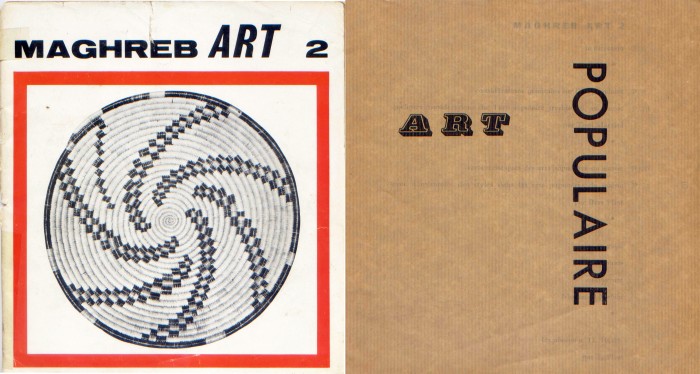November 10 2022 – Study day on Maghreb Art Magazine, Casablanca
Maghreb Art: A new patrimonial model?
Study day at L’École Supérieure des beaux-arts de Casablanca (ENSBA), with Fatima-Zahra Lakrissa, Gilles Aubry and Laura U. Marks.
Thursday 10 November, 3–9.30 pm
Info: schoolofcasablanca.com
Fatima-Zahra Lakrissa proposes to interrogate Maghreb Art through a plurality of voices and practices embodied by the magazine’s main theorists and artists with a view to understanding the magazine’s role in the structuring of a new field of knowledge between artistic and pedagogical experimentation, anthropology, material culture and art history, and to questioning, among other things, its critical legacy.
Gilles Aubry, a sound artist, musician and researcher, has been invited to reflect on the contemporary reception of Maghreb Art. He seeks to question of the ideas and meanings embedded within forms and sites of experimentation, including the body, sound, and environment, and within devices and situations of intervention such as performance and listening. Beginning with existing videos, sound pieces and installations, he will consider possible angles for the production of a new artwork as part of the School of Casablanca exhibition in 2023-2024. In accordance with his research methodology, based on collective production, Aubry will lead a workshop in collaboration with students from
L’ École Supérieure des beaux-arts de Casablanca. Invited to respond to Maghreb Art through sound, voice, listening and recording, the participants will share their sonic creations with the public.
The last part of the program will feature an intervention by philosopher and digital arts theorist Laura U. Marks, followed by a conversation with the audience. Starting from the schematic translation of Moroccan carpets by Prosper Ricard for the French industry in 1926, she will propose a different reading of the carpet as an algorithmic medium, drawing its generative force from the interaction between matter and ideas.
‘A carpet thinks, pulling forces from the weavers, the yarns, the matrix, and the algorithm and producing a new life form. Digital media works create along the same lines. Thinking like a carpet is a way to start at any point and connect to the cosmos, and to unleash creative energy that’s not available when we start at a larger scale. Privileging a non-human perspective allows us to see from the point of view of a knot—or to feel the way a pixel might feel, as in the work of Azadeh Emadi. I also note that many carpet designs have God in mind, such as prayer rugs and centralized compositions. But some carpets also have an internal force that suggests that Life creates itself,’ she writes.
